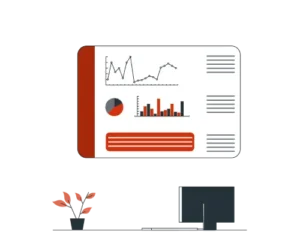How is RPA Driving Innovation in Today’s Business Industry?
Before we get up to what Robotic Process Automation is all about, consider the complications humans have to interact while doing a job. Redundancy gets involved more than often with the works humans do while they have to care as well of the micro-level details. Its outcomes on human-workforce are such that they are becoming inefficient in performing different work processes also it is hampering their productivity. RPA is the answer to not only streamlining work processes but also ensuring an efficient approach adopted to generate accurate results thus enabling the human workforce to take on higher responsibilities with their productivity intact.
RPA – Emulation & Integration of Human Actions
The technology maps human actions, imitate them, and streamline the operations. Precisely, Robotic Process Automation helps to perform micro-tasks of iterative nature to cut on time, cost, and the human workforce required to do a job. Generating accurate results with less resource utilization is the silver lining of the automation process. Repeated reliable results and quick time outcomes are among RPA strongholds. As the need arises, the automation technology integrates with other digital systems, captures the needful data then processes and integrates the result.
The best part comes as the RPA technology is highly accurate, restless, reasonable, assists the human workforce to compete for the bigger challenges.
Differentiation between RPA & other Automation Tools
Unlike the rest of the automation tools, RPA doesn’t cause disruption to the existing system instead it leverages the underlying infrastructure to pacify the operations without adding to the cost. Means, compliance, and cost-efficiency are generated by Robotic Process Automation. The rising technology is also of significance in automating the organization’s operations in a fraction of time and cost that was not the case previously. Being RPA efficiently streamlining the various repetitive tasks by leveraging the existing infrastructure, this future bound technology is set to change the traditional course of organizational doing.
- Perks of Implementing RPAutomation:
- Quick Result Realization
- Less Upfront Cost
- Highly Adaptable & Scalable
- Calculative & Accurate
How does RPAutomation Function?
RPA technology almost imitates human functions from their logging into applications, moving files & folders, copying & pasting data, filling forms, extracting details, scraping browsers, and more. In a nutshell, the automation process acts like a well informed and systematically working human workforce but with better calculative abilities and detailed eyes for the data. The technology has its own artificial intelligence and self learns to perform various operations whether it has to:
- Log in to applications
- Connect to APIs
- Copy & paste
- Move files & folders
- Capture & process data from various sources
- Read & write to the database
- Open email & attachments
- Scrape web data
- Do calculations
Processes Relevant to RPA
1. The quick implementation helps achieve ROI
Take an example of HR manually processing sick leave data of employees and as per calculations of 4 minutes on a single employee data, she/he will be able to complete around 2500 results that on another hand with the help of automation can be processed around 90% within 3 weeks. Refined results with almost none errors, the automation process makes the operations highly efficient.
2. Reduced resources & efforts add work process efficiency
Another example of a global retailer preparing closing reports for its store-chain using manual processes that seem sluggish thus inefficient than automating the process as it will extract the data from different resources and will store it on a single server for ease and quick access thus freeing up employees to focus on customer-centric responsibilities.
RPA bots will capture the closing reports from different stores to move to one server then will arrange the needed information as per stores’ closing reports.
3. Automation process improves customer service
Assume that a credit insurance company processing clients’ requests manually which is consuming more time than expected thus keeping their clients wait for service dispersal. A better approach is adopting automation to pacify the process and generate comparatively quick results with ensured accuracy and less resource utilization.
Clients getting their requests timely fulfilled add to the company revenue thus the company too will be able to retain clients for a long.
Summary
Automation streamlines various processes, generates accurate & quick results, reduces resource & human dependency for completion of tasks, customizes services, helps a business in customer retention, and achieves scale & growth thus fulfills future Robotic Process Automation business expectations.




